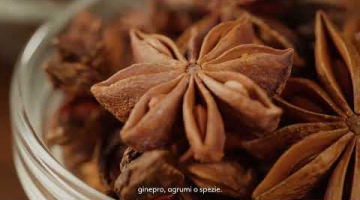by Clayton J. Szczech, June 26, 2014
An elderly indigenous man with sun-wizened skin and a big cowboy hat stands next to a dapper urban lawyer in an expensive tailored suit. The lawyer represents the largest industrial mezcal producer in the world, and is tapping away officiously on his Blackberry. The ranchero has sacrificed an entire day of work to be here, and is on his cell phone, gently but authoritatively instructing his son as to the urgent tasks in the family’s small cornfield. These two figures pretty well bookend the contemporary mezcal industry, and both are in Building Five of the “Administrative City” just outside of the Oaxacan capital to debate and decide the future of mezcal.
They were joined on June 23 by a historic, standing-room only gathering of over 200 mezcal producers, bottlers, brand owners and maguey growers from all eight states in the Mezcal Denomination of Origin (DO). The meeting was the final in a series, convened by COMERCAM (mezcal’s regulatory body) to solicit feedback on its proposal to radically alter the Official Mexican Norm currently governing mezcal. The proposal purported to recognize the hard manual labor, adherence to tradition and resultant lower yields and higher prices of small artisan producers by introducing a new category of mezcal. It was attacked by large industrial producers as too radical, and by the most rustic producers as too timid. COMERCAM had heard those, and other points of view for three weeks, and was about to present a modified proposal that they hoped would satisfy everyone.
COMERCAM Director Dr. Hipócrates Nolasco called the meeting order just as the arrival of a bus of producers and brand reps from the state of Guerrero brought the room to its maximum capacity. He asked for unity and mutual respect as the proposal was presented and debated. Unfortunately, he was immediately interrupted by two well-known proponents of the status quo, who attempted to derail the process entirely. They were effectively shut down by the multitude who had travelled quite far in some cases, and weren’t about to be bullied or have their time wasted. Four productive hours later, practically everyone in the room was pleasantly surprised by the document that had been produced and the relative lack of acrimony in the proceedings. A tasty lunch together while taking in Mexico’s surprising 3-1 drubbing of Croatia in the World Cup certainly didn’t hurt the shared feeling of accomplishment and progress.
The New Mezcal
Most significantly, the final proposal defines all mezcal as 100% agave, and breaks it down into three categories, defined by production methods. This goes quite a ways toward the type of recognition for the most traditional mezcals long demanded by traditionalists such as Mezcaloteca, La Logia de los Mezcólatras,Mezonte and Almamezcalera. There are of course remaining issues, which I’ll note below.
Three New Categories
- “Mezcal” category: essentially unchanged, though now explicitly lists processes that may be used. Diffusors and column stills continue to be allowed. Stainless steel is allowed in both fermentation and distillation. There were a large number of attendees in favor of calling this category “industrial mezcal,” a proposal which is vehemently opposed by the largest producers and also by many others who believe such a label would tarnish mezcal’s reputation as a whole. (After all, industrial vodkas, gins, etc. are not labeled as such.)
- “Artisanal Mezcal” category: These mezcals may be produced with either earthen pits or stone ovens, but the maguey must be cooked by “direct fire” (this does not necessarily mean firewood). The maguey can be milled by hand, stone wheel or mechanical shredder (but not mill chains). Allowable fermentation vats can be stone, earth, clay, animal hides or wood (but not stainless steel). Distillation is in alembics with copper or clay pots, and monteras may be wood, copper, clay or stainless steel.
- “Ancestral Mezcal” category: The most restrictive of the three, these mezcals must be produced with earthen pits and milled by hand or stone mill. Fermentation vats must be stone, earth, clay or animal hides. Stills must be clay pots, with or without wood or clay monteras. Agave fiber must be present in both fermentation and distillation. Disallowing copper alembic stills in this category is perhaps the most controversial element of the entire revised proposal to many traditionalists.
Producers from Michoacán who were present at the meeting, in particular, were adamant that copper alembics have been used to produce mezcal in their state for centuries. They argued that if that isn’t “ancestral,” what is? This argument gets to the very historical roots of mezcal, as it remains a subject of intense debate whether the copper alembics brought by the Spanish Conquistadores were very quickly copied using local materials like clay and bamboo (as Ulíses Torrentera argues), or whether clay stills are in fact pre-Hispanic (a possibility suggested by the research of Drs. Daniel Zizumbo and Patricia Colunga). In one of the few truly disappointing moments of the meeting, a proposal to add copper alembics to this category was not allowed to be voted upon. This will likely remain a very sore point in the years to come.
The most closely contested vote of the day was to decide whether to call the third category of mezcal “traditional” or “ancestral.” Both terms are quite loaded, given that what is considered traditional changes over time, and what is truly ancestral is open to debate given that most pre-Conquest records were destroyed by the Spanish. After heated debate, the “ancestral” camp carried the day, by a vote of 95 to 93.
Four Classes
The categories break down into the following four classes:
- Blanco: the mezcal formerly known as “joven.” That change was not without controversy. The argument that “young” in translation doesn’t do justice to the long maturation period of the agave and the laborious production process ultimately carried the day.
- Madurado (“matured”): mezcal aged in glass for a minimum of twelve months. The label can state the amount of time it has been aged.
- Reposado: mezcal aged in barrels between two and twelve months. The wood does not have to be oak, interestingly. The argument is that regional Mexican woods should be given a chance. After considerable debate, a limit on barrel size was voted down. The label can state the amount of time it has been aged.
- Añejo: mezcal aged over twelve months, in any type of wood vessel of any size. The label can state the amount of time it has been aged.
Th use of additives (abocantes – flavors, aromas and stabilizers, including worms, damiana, caramel, etc.) and production of traditional pechugas are defined as “additional operations.” The ingredients used in either must be listed on the label. The term “destilado con” is required for pechugas, followed by the ingredients present in the still. Pechugas are only allowed for artisanal and ancestral mescals. So for example, an artisanal pechuga distilled with chicken breast could read (in English) something like “Artesanal Blanco Mezcal, Distilled with Chicken.”
Maguey Or Agave?
One of the day’s most extended and passionate debates concerned the terms “maguey” versus “agave,” particularly in terms of which should be required in labeling. Maguey, of course, is the older of the two terms, having arrived from the Caribean with the Spanish in 1519. It is the preferred term in Oaxaca and many other mezcal regions. However, there is a strong argument for using the scientific name of the genus, agave, in that there is broader understanding of its meaning throughout the world.
Convincing arguments were made on both sides, with those having more contact with commercialization and international sales tending to prefer “agave,” and most of the older, rural producers strongly preferring “maguey.” The latter see “agave” as an imposition of the Tequila industry, which is a bigger part of their reality than a concept like “scientific name.” Tradition is reality, and one gentleman from San Luís Potosí asserted that “the Tequila makers brought us the name ‘agave.’”
Ultimately, a compromise was approved in which labels must state that the mezcal is “100% Maguey” as well as name the scientific name(s) of the raw material. Common or local names are allowed but not required.
Important Odds and Ends
- “Mature” maguey is defined as about to or having produced a quiote (flower stalk).
- The parameters around acidity have been removed entirely.
- All mezcal must now be filtered for solids (essentially with paper), and aggressive activated carbon filtration will continue to be allowed.
- Labels will be required to list the scientific name(s) of the agave(s) used, and in the case of ensembles, the species must be listed in descending order by mass. (This is to avoid labeling a mezcal simply “tobalá,” for example, when it contains only a small fraction of that agave. This practice is believed to be widespread.)
- Labels must name the state where the mezcal as produced. This is intended as a small first step towards eventually introducing more specific appellation zones, similar to wine.
What is Next?
The draft that resulted from this final meeting now goes to COMERCAM’s legal team, who will ensure the verbiage meets the standards of the General Directorate of Norms (DGN). It will then be reviewed by various other federal entities, including the DGN and Mexico’s trademark institute. These reviews will be followed by a 30 day public comment period. I’ll continue to monitor the process and post updates here.
















